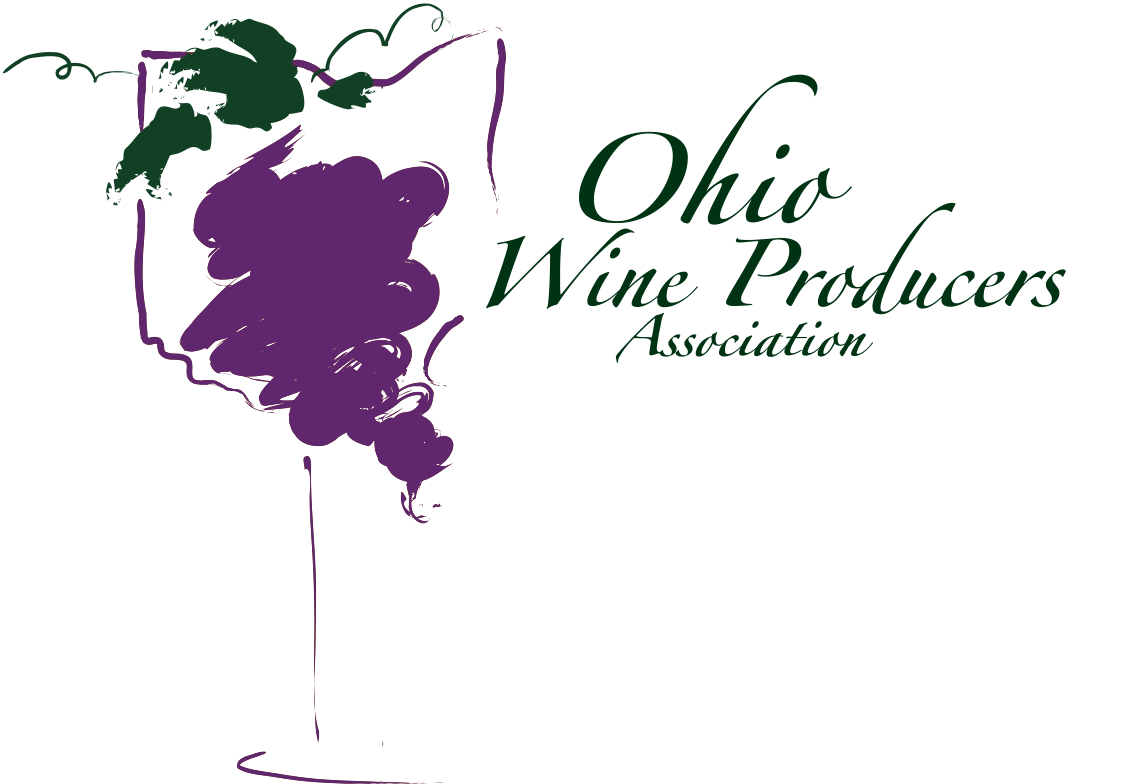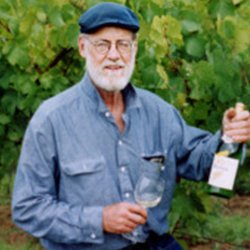Ohio Wines Founders Memorial Scholarship
Ohio Wines Founders Memorial Scholarship – honoring those leaders who contributed to the establishment of the Grape and Wine Industry in Ohio
Two annual, renewable Scholarships of $500 will be awarded to select students in recognition of demonstrated interest, aptitude, and creativity in advancing the interests of the Ohio climate grape growing and winemaking. The awards will be based on merit as well as need, and the recipient(s) will be recognized to the membership on the OWPA website and at the annual banquet in Columbus in February.
To be eligible for this award:
• A student must be a part or full-time student in an accredited institution of higher education in Ohio.
• Must be studying some aspect of enology, viticulture, a related discipline, and/or plan to open a winery in Ohio.
Applications consist of:
1. A letter that includes a description of your academic program and a statement of career objectives including your experience and interest in viticulture or enology.
2. A résumé highlighting vineyard or winery experience.
3. A letter of recommendation from a high school or higher education faculty member which certifies that you are a student and provides evidence of your interest and ability in viticulture and enology or related disciplines.
Applications will be reviewed by the Scholarship Committee of the OWPA Board of Directors and sent to dwinchell@OhioWines.org or mailed to OWPA, 1 South Broadway, Geneva, OH 44041. Checks will be made out directly to the student scholarship winner at the end of a completed semester.
Deadline for Receipt of Complete Applications for the 2022 year – October 30, 2022
Dr. James Gallander, of the OARDC, Ohio Agricultural Research, and Development Center at the Ohio State University. He earned his bachelor’s degree and Ph.D. from The Ohio State University in 1960 and '64 in food technology. In 1970, he was assigned resident duty at the University of California at Davis where he worked in enology.
He began as an instructor at the OSU's Ohio Agricultural Research and Development Center at Wooster while he was finishing his doctorate degree in 1963. Throughout the years, he was consistently promoted first to an assistant, then associate, and finally to full professorship in 1972.
His contributions to the Ohio wine industry can be measured at least in part, by the hundreds of food science and enology research studies and resulting published articles and presentations he has given in his career. His industry-shaping research placed him behind podiums at wine meetings across the country, sharing not only his research but the message that the Ohio wine industry is a progressive and aggressive competitor.
He has served as an advisor to the Ohio Wine Producers Association and organized the Ohio wine competitions and guided the Short Course for dozens of years.
Dr. Garth Cahoon, of the OARDC. A native of Delta, Utah, Garth Cahoon earned a degree in technical soils from Utah State University in 1950 and a Ph.D. in Plant Science from the University of California at Los Angeles in 1954.
He worked as a horticulturist at the University of California, Riverside, from 1953 to 1963 before coming to OARDC as an associate professor in Horticulture in 1963. By 1967 he was made full professor and in 1983 assumed the role of assistant Chair of the Department of Horticulture at OARDC. Professional assignments in India, Somalia, and the Caribbean broadened his knowledge of small fruit horticulture.
.
Robert Gottesman. If Longworth is the Father of Ohio Wine, this gentle man was certainly the industry's "fairy Godmother".
Born in Brownsville, Pennsylvania in 1918, Robert G. Gottesman, became a resident of New York City when he was hired by Schenley Industries. In 1957, after a successful sales career, Gottesman moved to Cleveland where he and his partner, Louis Zeller, purchased Paramount Distillers, Inc.
Gottesman's interest in the wine industry began with Paramount's 1976 acquisition of Meier's Wine Cellars in Cincinnati. He expanded the company's holdings with the purchase of 400 acres on North Bass Island, two hundred of which were devoted to vineyards. Firelands Winery in Sandusky and Mon Ami Wine Cellars in Port Clinton were acquired in 1980.
Paramount grew into the largest grower and producer of wines and juices in the state of Ohio until it was sold in the early 2000’s.
Gottesman's ambitious entry into the wine industry has been credited with sparking a renaissance in Ohio winemaking and his planting of some of the state's first vinifera grapes bore testimony to his confidence in the future of fine Ohio wines.
In 1994, he was the first member of the Ohio wine industry to be inducted into the Ohio Agricultural Hall of Fame.
He was a founding member of the Ohio Wine Producers Association. He initiated the legislation that created the Ohio Grape Industries Committee, which has become a model for similar programs in at least eight other states. He was a tireless crusader for our industry working nearly to the very day he died.
Louis Heineman One of the first men contacted during the formation of the Ohio Wine Producers Association was Louis Heineman, owner of a winery that has been in the business for now, five generations. . Louis owns the winery that has been in his family for three generations and has had a lifelong involvement in the business.
Louis served as an OWPA director for many years, having been president and vice president during part of that tenure. Louis's insights into the political arena, his geniality and overall commitment to the industry helped forge a strong foundation for the Ohio grape and wine industry.
As a young boy Louis cleared tables in the winery and at the age of 22 he ran the bar. Today the fourth and fifth generations of Heinemans, share the family wine making tradition.
The Heinemans and other local growers cultivate 50 acres of grapes on the island. This gives the winery "vine to wine" quality control year after year. For the 50,000 gallons of wine produced annually most grapes are labruscas, most notably Catawbas, and the rest includes both viniferas and French hybrids.
Kenneth Schuchter grew up in southern Ohio and graduated from Morrow High School in 1949, where he loved to play basketball. He attended Xavier University to play basketball. He served in the United States Army in Korea in 1952 and 1953.Then returned home and enrolled in the University of Cincinnati where he was named the captain of the baseball team. He graduated with a bachelor’s degree in business. That same year, he played in the National Amateur Baseball Championship and was drafted by the Cincinnati Reds. However, the Reds only offered $30,000 and Kenny went to General Motors for $20,000 instead.
While working at General Motors he developed the idea to plant a few grapevines and established Valley Vineyards Winery in the barn of the farmstead in 1970.
Ken was instrumental in the formation of the Ohio Wine Producers Association and served on its board for ten years. In the early 1980's he also promoted the formation of the Ohio Grape Industries Program and served that board for many additional years.
Forever dedicated to his family and the industry, Ken retired in 1988, turning the business over to children Kenny Joe and Dodie. With exception of a few vacations, he stayed active for many ensuing years.
Arnulf Esterer Arnie was the visionary, who in the 1970’s became a disciple of the iconic Dr. Konstantin Frank, the Russian immigrant who first planted vinifera grapes in Finger Lakes. Until Frank’s efforts, no one believed quality vinifera could be grown in the cool climate regions of the eastern United States.
Arnie found Markko Vineyards in Conneaut and established the winery with his partner Tim Hubbard of Ashtabula.
When Leon Adams, legendary author and one of the early champions of the California industry tasted Arnie’s 1972 Riesling, he was amazed and shared his story in his first edition [1978] of Wines of America.
Arnie was a huge proponent of Lake Erie as a viticultural district and contributed to the Federal application for the AVA [American Viticultural Area] in 1983. Later in that decade, while serving on the OWPA board, Arnie declared at a meeting on South Bass Island, that the Lake Erie Region could produce world class vinifera if our growers committed themselves to the task. Since at that point, nearly all the vineyards were dominated by Concord and Niagara [native] varieties, his prediction was regarded as ‘pie in the sky’ by most of the board. But he persisted.
In the mid 1980’s when Robert Gottesman planted the first vinifera on North Bass Island [Isle St. George], Arnie served as a consultant for the project.
Over the years, Arnie mentored dozens of young growers and winemakers. He served on the board of the OWPA [Ohio Wine Producers] for several terms and spoke at many industry conferences. However, as the Ohio wine community looks back toward the early decades, Arnie’s most significant contribution has been his passion for and firm belief in the Lake Erie district as a major player in the world of wine. His early vision did predict the emergence of the area and led the way to what is now truly national recognition as a place which can and does produce world class cool climate wines.
Tony Debevc entered the wine business in 1971 but comes from a grape growing family whose roots date back to 1916.
He is a graduate of the Ohio State University and is a member of the AGR fraternity. He and his parents established one of the first new wineries in northern Ohio since the days of Prohibition. In the early years of the winery, he was mentored by the iconic Philip Wagner of the Boordy Vineyards in Maryland.
He was a founding director of the Ohio Wine Producers Association and elected as the first chair of the fledgling American Association of Vintners which ultimately grew to become WineAmerica. He was appointed to serve on the very first Ohio Grape Industries Committee.
He submitted the federal application which created the Grand River Valley Appellation. He is an innovative viticultural leader and was among the first to use wind machines to protect against winter damage and every row tiling, both of which allowed for the expansion into varietals once thought impossible to grow in Ohio. He now controls the largest plantings of winegrape vineyards in the state.
His vision was instrumental in the formation of the Grand River Valley Winegrowers group and of the Winegrowers of Ohio lobbying effort. He worked with many other industry pioneers and grew his small winery into a nationally recognized leader in the east.
His 1992 Grand River Riesling shocked the staid San Francisco Chronicle wine competition and its head judge Anthony Dias Blue when it was awarded Best White Wine of the Competition







